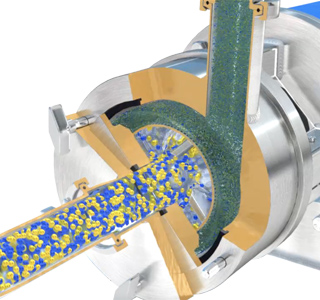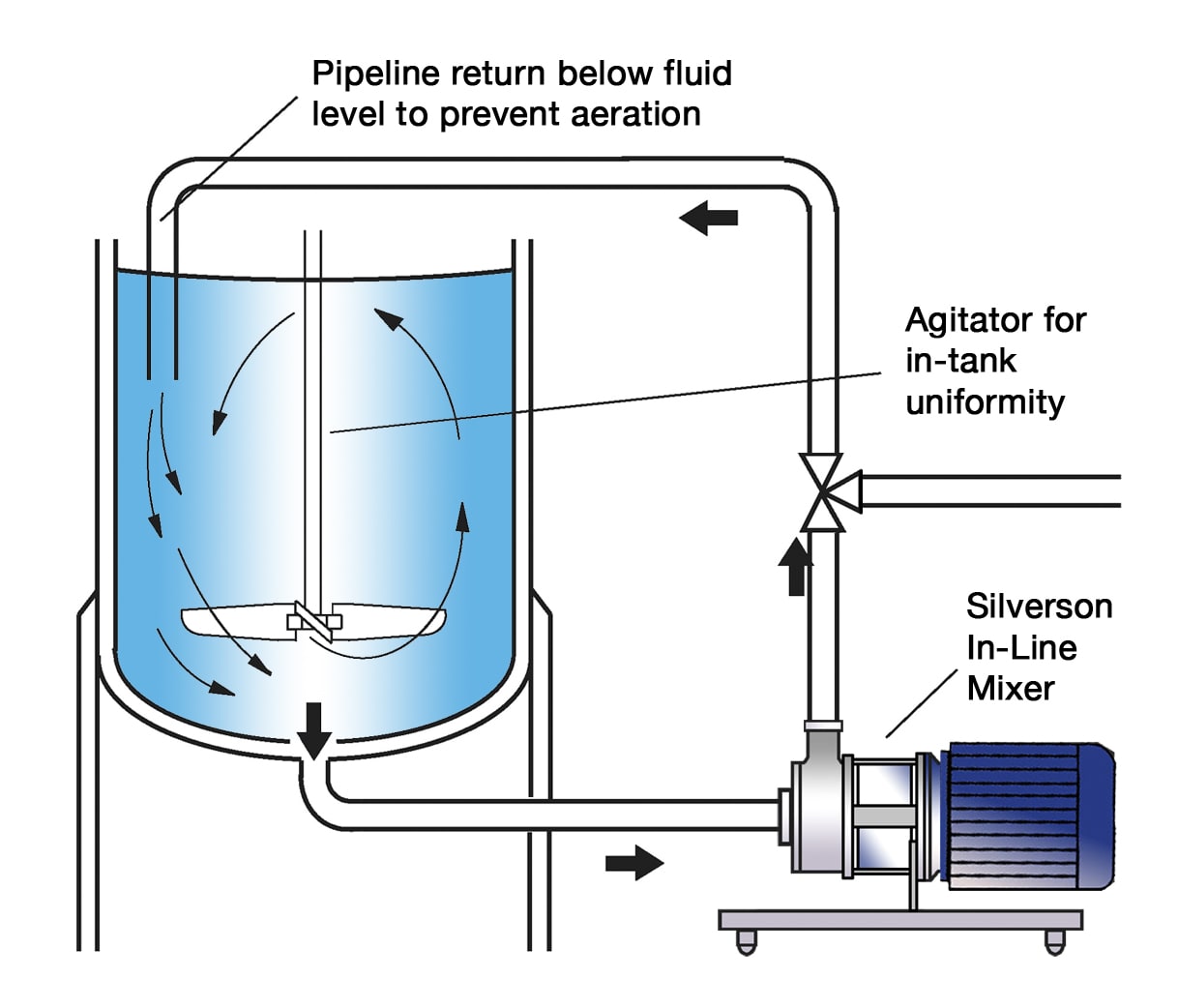Production of Cream Liqueur
Cream liqueurs are an emulsion of cream with an alcoholic spirit such as brandy, whisky, vodka, etc. which may be in highly concentrated form. Most products contain several other added ingredients which may include sugar, full fat milk powder, non-fat milk solids, flavourings, colouring, preservatives and a thickening agent such as sodium caseinate, which also acts as a stabiliser to prevent the cream and alcohol from separating.
The Process
The basic manufacturing process consists of three stages:
- Dispersion of powdered ingredients into either the alcohol, cream or aqueous phase as appropriate.
- Premixing of the phases to form a pre-emulsion.
- Homogenisation, normally using a high pressure homogeniser to obtain a stable emulsion which will not separate in the bottle.
The Problem
A number of problems can be encountered when using conventional agitators:
- Long mixing times are required to completely wet out, disperse and/or dissolve the ingredients.
- Powders such as caseinate and milk powder are very cohesive and have a tendency to form agglomerates which agitators cannot easily break down.
- Caseinates are difficult to dissolve and will rapidly increase in viscosity, especially if added directly to the cream.
- Agitators do not impart enough shear to form the stable pre-emulsion of low globule size required by the high pressure homogeniser.
- Several runs through the high pressure homogeniser may be required to obtain the required product.
- Many ingredients are heat sensitive.
- Loss of alcohol through evaporation must be avoided.
The Solution
These problems can be overcome by adding a Silverson In-Line mixer to the existing process. Batch mixers and the Silverson Flashmix powder/liquid mixing system can also be used for this application. Operation is as follows:

Stage 1
The high speed rotation of the rotor blades creates a powerful suction which draws the liquid and powdered ingredients into the workhead.

Stage 2
Centrifugal force drives the materials to the periphery of the workhead where they are subjected to a milling action in the gap between the rotor and stator wall. Agglomerates in the milk powder are broken down as the powder is finely dispersed into the milk.

Stage 3
The product is forced out through the stator as fresh materials enter the workhead. In a short mixing cycle all the material passes through the workhead, progressively reducing particle size and exposing an increasing surface area to the milk, accelerating the dissolving process.
-
Stage 1

Stage 1
The high speed rotation of the rotor blades creates a powerful suction which draws the liquid and powdered ingredients into the workhead.
-
Stage 2

Stage 2
Centrifugal force drives the materials to the periphery of the workhead where they are subjected to a milling action in the gap between the rotor and stator wall. Agglomerates in the milk powder are broken down as the powder is finely dispersed into the milk.
-
Stage 3

Stage 3
The product is forced out through the stator as fresh materials enter the workhead. In a short mixing cycle all the material passes through the workhead, progressively reducing particle size and exposing an increasing surface area to the milk, accelerating the dissolving process.
The Advantages
- Agglomerate-free mix.
- Rapid mixing times.
- Stable pre-emulsion and a more stable end product.
- The pre-emulsion is more uniform and of a low particle size, allowing faster processing through the high pressure homogeniser.
High Shear In-Line Mixers
- Ideal for larger batches
- Must be used in conjunction with an efficient in-tank agitator to wet out powder
- Aeration free
- Easily retrofitted to existing plant
- Self-pumping
- Ultra Hygienic models available
Silverson Flashmix
- Ideal for larger batches
- Capable of rapidly incorporating large volumes of powders
- Minimised aeration
- Minimised cleaning requirements
- Controlled powder addition rate
- Minimum operator input required
- Ultra Hygienic models available
High Shear Batch Mixers
- Suitable for batches up to 1000 litres
- Can be used on mobile floor stands
- Can easily be moved from vessel to vessel


